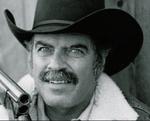Western hunters are fortunate to have a variety of big game species to hunt. Each habitat they live in offers different environments and requires various strategies and hunt techniques. Some animals are far easier than others to hunt, and some require a great deal of physical effort. Let’s take a brief at look at each species.
MOUNTAIN GOATS. As you consider all the species, you might believe the mountain goat to be the toughest of all to hunt. It lives in the highest elevations, typically in snow-capped peaks. Just getting within rifle range of one may be impossible because of the steep chasms and canyons that may lie between you and the quarry. Even long-range shooters would think twice because of the necessity of trying to retrieve a far-off goat. Some animals have been lost because they slid down a mountain or fell off a cliff where retrieval was impossible. Getting to a goat can be a profoundly Herculean effort, whether you’re stalking it or trying to transport one off the mountain. One positive is that you often, but not always, are able to execute a strategy where you can plan a reasonable route and travel at a pace that’s within your ability. In much goat country, horses can’t be used to access the high elevations because of the lack of trails and the extremely steep slopes. To be sure, this could be the toughest hunt you’ve ever made.
SHEEP. Sheep also prefer high elevations, but typically not as high as goats. Horses and hiking are most commonly used. Plenty of glassing with good binocs is necessary to find a good ram, especially since rams may travel together in groups. This can be extremely tough country where you may find yourself a dozen or more miles from the trailhead. If hunters are on horseback, they may need to tie up the horses and make the final stalk on foot. This can definitely be a tough hunt, and not one for people with serious physical issues.

MOOSE. You’ll likely find your moose in a beaver swamp or willow bottom. Hunt techniques include calling during the rut, glassing wetlands from a distance, or easing through the willows. Our moose in the Rockies are technically called Shiras or Wyoming Moose. Though they prefer marshy areas you may find them in the forests at reasonably high elevations. I’ve seen them at 9,000 feet. The toughest part of a moose hunt is obvious. When you’re looking at an animal on the ground that weighs more than half a ton you have your work cut out to get it to a road, which typically means quartering or boning it. Be sure you have your Caribou Gear Game Bags to protect the meat!
ELK. These handsome animals live in a wide variety of environments, but are mostly at home in forested mountains. Finding them may take some doing, especially in places where there’s heavy hunting pressure. If you’re hunting during the rut, you have the option of calling them with bugle and cow calls. Otherwise, you’ll be doing some serious hiking in terrain and vegetation that’s not very hunter friendly. It’s not uncommon to hunt for days and never see or hear an elk. If you’re successful, you’ll need to pack out an animal that you’d be hard pressed to drag. A big bull will weigh upwards of 700 pounds or more; cows 350 and up. If you’re hunting elk earnestly and put the time in you’ll know there are few easy elk.

DEER. The western mountains are home to mule deer, though whitetails inhabit lower elevations and prefer agricultural areas, ranches, and brushy river and stream corridors. There are exceptions in the Rockies of northwest Montana and Idaho’s Panhandle where whitetails live in heavily timbered upper elevations. But it’s the muley that’s best known in the west. This deer lives in every environment, from lowland deserts up to timberline. Hunters who hunt them in rugged country know they aren’t a piece of cake. Though muleys appear to be less wary compared to a whitetail, older bucks can be escape artists in much of their environment. Hunt circumstances will determine the difficulty of the hunt. If you’re lucky you might shoot one close to a road. If you’re not lucky you might shoot one miles from your truck.
ANTELOPE. These animals live in the open prairie and can be seen for miles. Their incredible vision and speed are their primary means of defense. In prime antelope country you may see dozens, if not hundreds a day. Since they live in country where access is typically good, you can spot them from a vehicle and then make a stalk on foot. Most hunts are reasonably easy but there are exceptions. I recall a hunt where I hiked to distant waterholes and killed antelope a long way from a road, requiring a tough drag.

BLACK BEARS. There are many ways to hunt bears, the most common being spotting and baiting, and with hounds. Baiting and hound hunting are legal in several western states. I’ve hunted all these strategies and I believe running bears with hounds can be extremely challenging. Because bears often are cornered when brought to bay it’s essential for the hunters to travel quickly, since a bayed bear may opt to fight and seriously injure or kill dogs. That sort of pursuit can be tough in rugged terrain. For the most part, however, bears are mostly hunted by spotting and stalking which is legal everywhere. Spotting a bear gives you the option of planning the easiest route and advancing as the circumstances dictate. That doesn’t necessarily mean it’s not challenging, however. As I like to say, “you can see Venus from your pickup, too— it’s all a matter of getting there.”
WOLVES. You can hunt wolves in Idaho, Montana, and Wyoming. In some states, notably in Wyoming, they can be hunted year-round in 85% of the state with no licenses required, and with no seasons or bag limits. This applies to nonresidents as well. Depending on the state, wolves can be hunted or trapped with multiple bag limits. Hunters savvy to wolves and wolf hunting are often very successful. Wolves are typically found in upper elevations occupied by elk, but I’ve seen them running next to highways. Serious hunters face tough conditions, especially if they’re hunting wolves in deep snow.

MOUNTAIN LIONS. Hunting these big cats is done almost exclusively by running them with hounds. Occasionally a hunter can track one in perfect snow conditions and kill it, but that’s the exception. In areas where hound hunting is forbidden, many hunters buy a lion tag while they’re elk or deer hunting and shoot a lion that happens to show up.
But the primary way to hunt lions is with hounds. The presence of snow is usually mandatory, especially when it’s fresh. Some hunters in the southwest states track lions on dry ground which can be a challenge.
So it is that hunting lions with hounds is, in my opinion, the toughest hunt of all. You don’t have the luxury of planning a strategy. You find a fresh track, turn the hounds loose and immediately follow. That’s the challenge — the need to follow. Lion country is typically rugged. A cat being pursued by hounds will seek the nastiest landscape it can find. I hunted lions for years in Utah and learned that invariably a pursued lion will head for rocky canyons where rocks as big as bathtubs and pickup trucks lie on top of each other. This is true in most places where cats are hunted. What this means is that you must stay with the dogs, keeping them within hearing. Unless you know a way to avoid following in the rocks by making a big circle, you can count on a profoundly difficult, if not impossible trek. Most of the time you’re not walking - you’re jogging and moving as quickly as you can. It gets worse when the dogs have treed the lion. You’ll know it by their voices. You don’t know if the lion is on a big rock or up a tree, and you don’t want your hounds injured if the lion attacks, usually when they’re bayed on the rocks and the hounds are a couple feet away. So, you pick up the pace. There will usually be places where the lion and hounds have passed through with ease, but you might have a tough time scrambling in the difficult terrain. You’ll be breathing hard, gasping for air, spurred on by the pursuit. This is not a hunt for someone who isn’t in good physical condition. To make the hunt even tougher, try chasing lions in the country where I live in northwest Wyoming where packs of wolves live. Unfortunately, wolves love dog meat, and they’ll hone in on the sound of the hounds and kill and eat them. An outfitter buddy had three hounds killed and eaten by wolves. They hounds were too far ahead of the hunters and were slaughtered by the wolves before the hunters could get there.

What this all means is that outfitters release their hounds only on a very fresh lion track, and a fast pursuit is required to stay as close to the hounds as possible lest the wolves catch up to them. This scenario can be the mother of all tough hunts given the ordeal of running and jogging through the forest and rocky side hills.
While it’s entirely possible to have an easy lion hunt you never know what’s in store when you’re looking for cat tracks. A lion might have crossed the road just before you came along. In that case you might be treated to a very short hunt. I know several instances where lions have been treed within a couple hundred yards of the road.
Of course, hunts for all the species listed here can be extremely difficult or extremely easy. It all depends on the circumstances. In my mind, however, hunting lions with hounds, day in and day out, is my choice of the toughest of all hunts.
Feel free to comment here and let us know your opinion.














